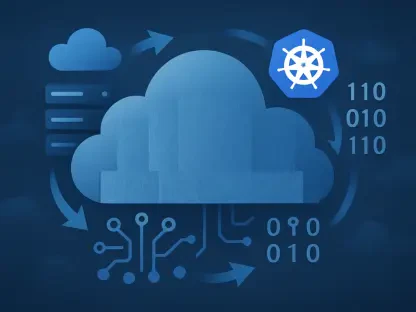Infrastructure as a Service (IaaS) has carved a niche in cloud computing, offering scalability and flexibility in resource deployment. Nevertheless, it also demands a shared commitment to security from both the provider and the user. Engaging in IaaS, companies must navigate cautiously and implement robust security tactics to protect their operations in the cloud. This is critical in today’s advanced threat landscape, where risks to digital infrastructure are increasingly complex. Ensuring a secure IaaS environment requires an astute balance of provider capabilities and user vigilance. Both parties must collaborate to establish protocols that safeguard against potential breaches, maintaining the integrity and reliability of cloud infrastructure. This cooperative approach to security is non-negotiable in the age of adaptable and resilient cloud services.
Establish Robust Encryption Practices
Encryption is the cornerstone of any sound security strategy in the cloud environment. It is essential to encrypt data both at rest and in transit, ensuring that all sensitive information is wrapped in a virtually impenetrable layer. However, encryption alone isn’t enough. Rigorous access controls and the implementation of multi-factor authentication (MFA) serve as additional bulwarks against unauthorized access. The goal is to create a formidable defense that insulates your data against the myriad cyber threats prevalent in the digital sphere.With encryption mechanisms in place and access strictly controlled, organizations can address some of the most critical concerns that keep IT professionals awake at night. When data in the cloud is locked away securely, the risks of exposure due to configuration errors or credential theft are substantially mitigated.
Secure Application Programming Interfaces (APIs)
APIs serve as essential links between data, services, and the cloud, necessitating stringent security measures. Adhering to secure coding principles is crucial, and robust authentication and authorization safeguards are a must. Safeguarding APIs goes beyond mere defense; it is about preserving the overall integrity of systems.Constant monitoring is vital to tracking and responding to unusual activities, thwarting potential security infringements before they can cause harm. A securely managed API infrastructure ensures users can manage their cloud interactions with confidence, relying on a framework protected from malicious threats.This vigilant approach to API security does more than prevent unauthorized access; it underpins the reliability and trustworthiness of cloud-based operations. In an era where digital vulnerabilities can be exploited instantaneously, such proactive security measures are indispensable. They provide users peace of mind, aware that their cloud-based gateways are defended against the myriad of digital threats.
Clarify the Shared Responsibility Model
Understanding where the provider’s security remit ends and where the user’s begins is crucial under the shared responsibility model. Clear demarcation helps users to precisely navigate security obligations, focusing on their own applications, data, and configurations. It is the user’s duty to safeguard their corner of the cloud, erecting robust defenses for their digital assets against any persistent cyber threats.Grasping the extent of one’s responsibilities eliminates ambiguities, ensuring that appropriate security strategies are deployed within the user’s domain. Dedicated attention to these areas minimizes vulnerabilities and bolsters the overall security posture.
Implement Virtual Network Compartmentalization
Just as physical gates protect a secure facility, virtual network segmentation performs a similar function in the cloud. By breaking down the digital landscape into separate, controlled VLANs, companies can effectively manage the circulation of data, setting up virtual barriers that restrict and isolate potential cybersecurity threats, much like cordoning off a hazardous area.This process of compartmentalizing the cloud doesn’t just keep unwarranted access at bay, but it also ensures that any security breach has limited impact. Through such precise containment, the ramifications of an attack are greatly minimized. Implementing these segmented zones within an Infrastructure as a Service (IaaS) framework is a critical approach to maintaining robust security in cloud environments. Virtual segmentation becomes a pivotal defense system, becoming integral to an organization’s strategy in shielding its valuable data assets against the increasingly sophisticated threats in today’s digital world.
Configure Firewalls and Deploy Intrusion Detection Systems
Firewalls and intrusion detection systems (IDS) form the cornerstone of network security. These digital sentinels meticulously examine incoming and outgoing traffic to thwart unauthorized access while enabling legitimate communication. Firewalls keep intruders at bay, and IDS monitors for anomalies, allowing for quick action against threats.Securing Infrastructure as a Service (IaaS) involves overcoming complex challenges. It demands deploying encryption, training users in security protocols, and understanding the nuances of shared responsibility in cloud security. These efforts are critical to robustly protecting data and infrastructure.The landscape of cloud security is ever-changing, requiring constant vigilance and adaptability. As organizations navigate these waters, the amalgamation of proactive measures forms a durable barrier safeguarding the digital realm. Embracing these practices not only fortifies an organization’s assets but also contributes to a more secure online world.









